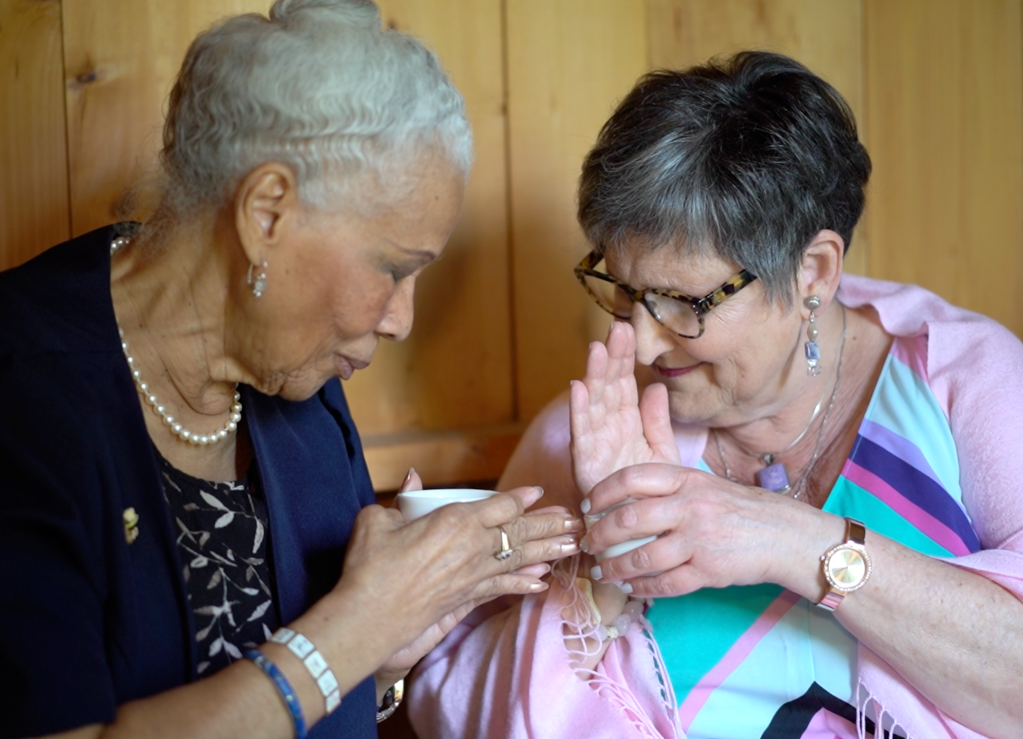
Sharing tea during tea and dialogue practice (photo by Jeff Klein)
Convinced there is great need to create opportunities for authentic connection, I started working on a new mindfulness practice that involves respectfully sharing tea and dialogue. While technology has numerous practical advantages, many of us engage much less in the kind of trusting face-to-face interaction that helps our social species thrive. Loneliness and social isolation, which have been found to be as bad for us as smoking, were on the rise even before the pandemic.
This post explains why I chose to take elements from two very different relational practices to create what I hoped would prove to be an accessible and adaptable new secular “tea and dialogue” practice.
At first glance, Japanese tea ceremony’s largely silent formal sharing of a bowl of tea might seem worlds away from the in-the-moment candid verbal sharing of Insight Dialogue. But both practices provide the safety and support needed to bring sustained attention to social interaction that deeply taps the wellbeing of felt connection. And both can open the door to life-transforming insight.
Japanese tea ceremony is a performance art that takes place in a tranquil setting apart from everyday worries. Water is whisked into a bowl containing a mound of powdered green tea and bowls of tea are shared with a few guests. After much practice, body learning makes it possible to carry out the detailed prescribed procedures with artless ease. Time slows down. Sustained embodied awareness opens one to the deeper beauty that can be found in imperfect objects, in nature, in all those gathered in the tea room, and in each moment. Sharing tea with many different guests over the years always left me feeling centered and at peace regardless of what else was going on in my life. Japanese tea ceremony began to feel like a time capsule of wisdom that was badly needed in these particularly stressful times.
Insight Dialogue is a practice with three elements; meditative awareness, investigation of a topic capable of imparting wisdom, and human relating. Participants form into pairs or small groups and take turns for timed intervals sharing what arises in the moment on the designated contemplation topic. That all listen without commenting creates safety, while the practice’s guidelines – Pause, Relax, Open, Attune to Emergence, Listen Deeply and Speak the Truth – provide powerful support. The subjective impressions that are shared tend to be intrinsically interesting. They are often wise and moving; more like poetry than everyday speech. Being truly heard is rare. Listening carefully is a natural way to encourage others to continue returning that precious favor. After a time, I found myself bringing the same nonjudgmental supportive energy to everyday conversations, even stressful ones, and that transformed my life.
Bringing sustained embodied awareness to authentic sharing amplifies the wellbeing and resilience that generosity and gratitude provide for our species. That compassion is warranted becomes clear (given how much each of us has to contend with), but so are joy and gratitude (given how much we are able to give and receive from each other).
Posts describing variations of the new practice combining elements of Japanese tea ceremony with meditative verbal sharing are available by clicking on the Tea & Dialogue category to the right and scrolling down. Whether with dear friends or with someone new, it is well worth remembering how much we benefit from authentic connection.